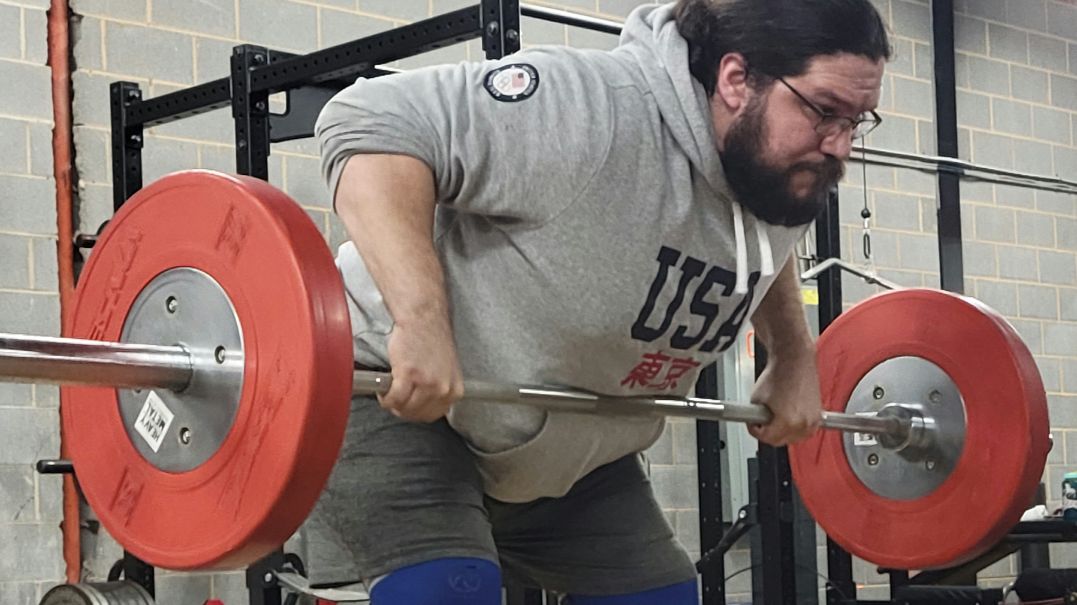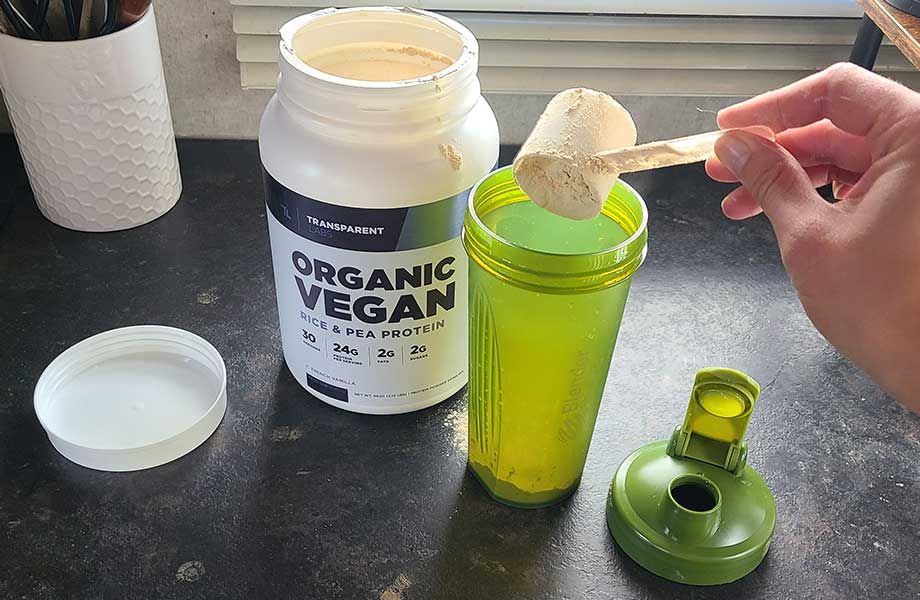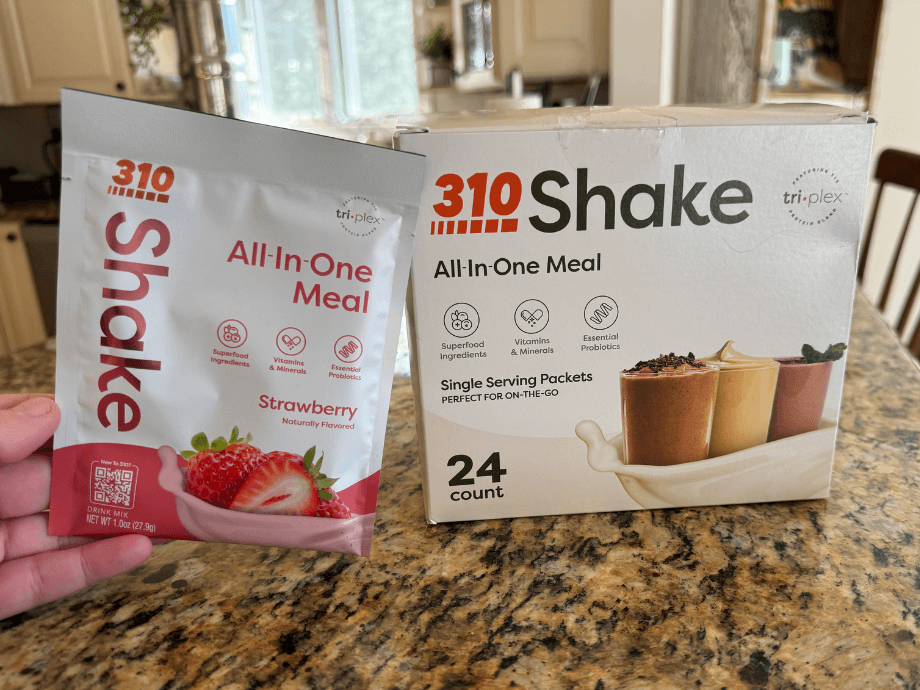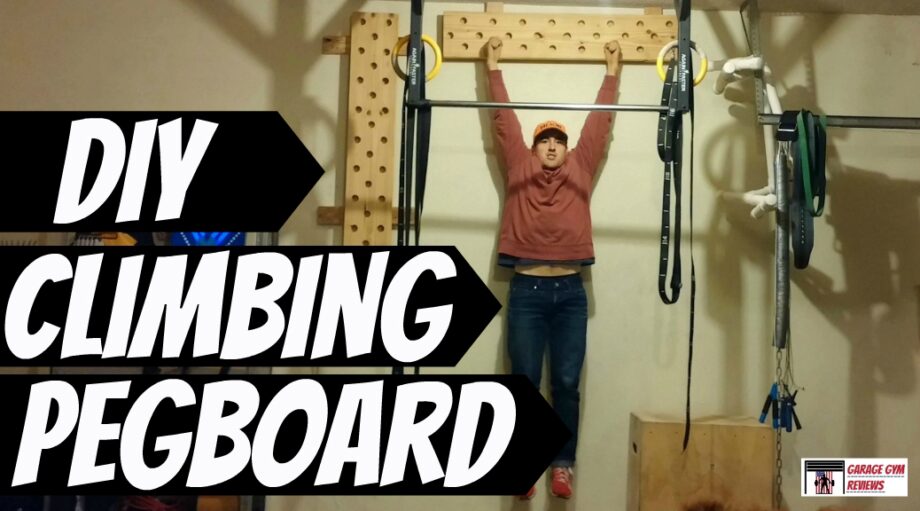As you begin to immerse yourself further into the world of fitness—specifically if your pursuit is to build muscle—you’ll come across terms like “concentric exercise” and “concentric movements” and, on the flip side, “eccentric training” and “eccentric movements.”
As a quick overview, there are four different parts to each rep you do while lifting weights:
- The concentric phase, where the muscle shortens
- The pause at the end of the range of motion (isometric contraction)
- The eccentric phase, where the muscle lengthens
- And the end of the rep or lockout
When you focus on the eccentric part of any exercise, this is known as eccentric training. What eccentric training entails is performing a more prolonged lowering phase as a way to boost exercise intensity and to help build more muscle and strength.
Here we’ll explain an eccentric muscle contraction, a description of eccentric training, and the benefits of this type of training with some exercise examples to help boost your current training program. Ready to go slow? Then let’s go.
RELATED: A Complete Guide to Using Resistance Bands
What Is Eccentric Training?
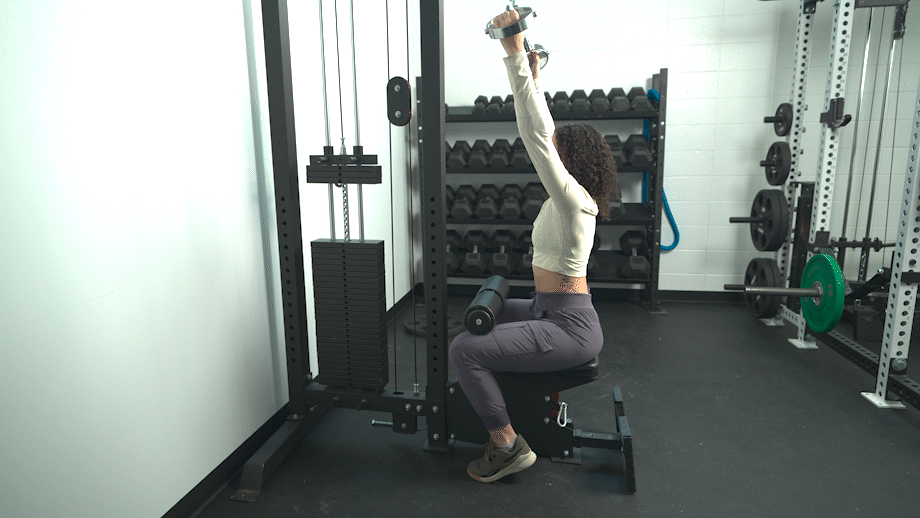
Before diving into the details of eccentric training, let’s understand what an eccentric contraction is. Eccentric muscle contraction involves muscle lengthening while under tension due to an opposing force greater than the force generated by the working muscle.
Examples are lowering the barbell with an RDL (slow eccentric) or the preparation for plyometric exercises like power push-ups or squat jumps (fast eccentric).
As fewer motor units of the skeletal muscle contract during the eccentric phase, due to the muscle lengthening, the working muscle can generate 1.3 times more tension than a concentric muscle contraction.1 This increase in eccentric loading during the eccentric contraction leads to size and strength gains when the weight is lowered under control and through a full range of motion.
What is eccentric training as a training style, though? Well, it focuses on lengthening part of the exercise, making it more challenging by slowing down the speed of the eccentric contraction. But be warned. This type of resistance exercise can lead to delayed onset muscle soreness or DOMS, muscle damage and swelling, and temporarily decreased range of motion, according to a study in Histochemistry and Cell Biology.2
4 Benefits of Eccentric Training
Eccentric training takes real focus and discipline to pull off because it is uncomfortable, and you will feel the burn. Here are a few positive adaptations to include eccentric training in your exercise program.
Reduced Risk Of Injury
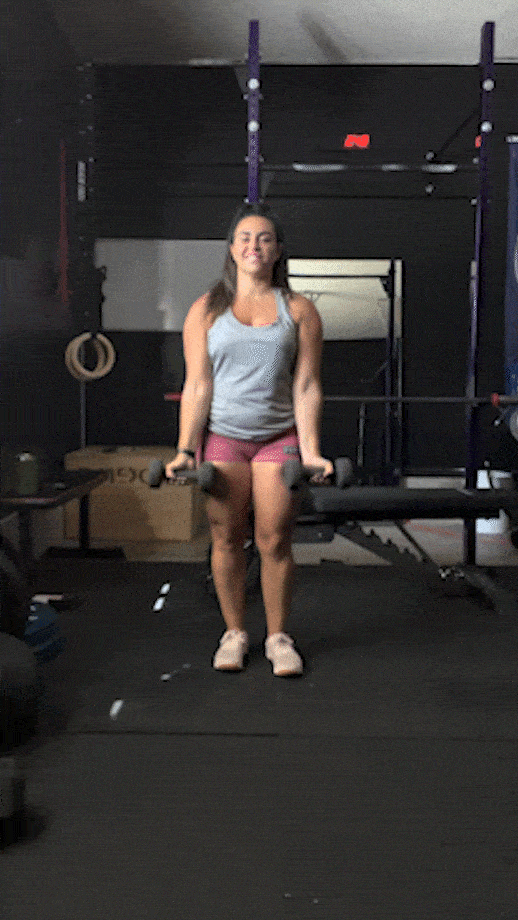
Muscle strains usually happen during eccentric contractions. Have you ever seen a sprinter sprinting and straining a hamstring during a race? This personal trainer rests his case. When you emphasize the lowering part of any exercise, it strengthens the muscle to help prevent this from happening.
Here’ s just one example: The Nordic hamstring curl, an eccentric-strength exercise, has decreased the risk of hamstring strains by 51 % compared with those who didn’t do it.3 Physical therapists and sports medicine doctors commonly use eccentric training when coming back from muscle strains and ACL injuries.
Improved Muscle Growth
When the muscle fibers in any muscle group lengthen, there is less muscle friction than when you’re concentric training; therefore, the muscle is stronger during eccentric contractions.
A 2017 research study comparing eccentric and concentric contractions found that eccentric-focused training resulted in slightly more muscle mass (10%) when compared with concentric-focused training (6.8%). 4
Better Technique
When you’re struggling with technique during any exercise, it pays to spend more time doing the exercise, not less. Slowing down the eccentric actions gives you better feedback on your body’s position in space and helps you improve your movement.
You’ll Get Stronger
Eccentric contractions are by far the strongest muscle contractions due to the lack of muscle friction compared to concentric contractions. What does that mean for you? You’ll be able to improve your muscle strength and size when you focus solely on eccentric contractions.
When and How to Use Eccentric Training
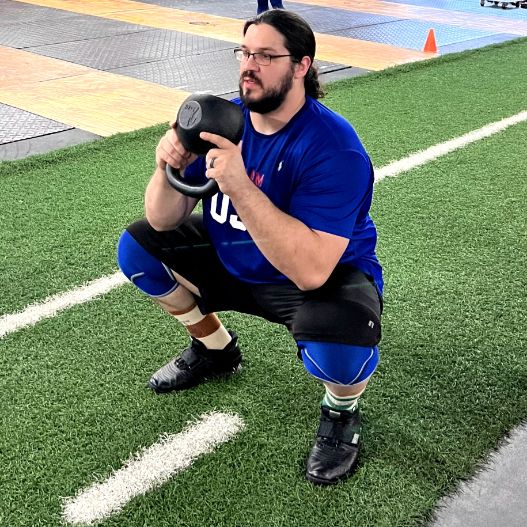
Eccentric training is a high-intensity weight training method, and you will be using more weight and putting the muscles under great tension. And this creates a high degree of muscle soreness and requires a lot of energy and focus. It is best to do it with only one exercise during your training sessions and perform this early in the session when you have the most energy.
Here are a few reasons when to use eccentric training.
- To reduce your risk of muscle strains.
- If you want to improve your overall muscle strength and size, eccentric training is an excellent method.
- Improve your technique with a specific lift—for example, a negative bench press to improve your bar control. But remember to have a spotter when performing these.
- When you’re stuck on a certain weight and looking to improve, eccentric training will help.
Eccentric Training Exercises
Here are three eccentric-focused exercises to do when starting your journey into eccentric resistance training.
Squat
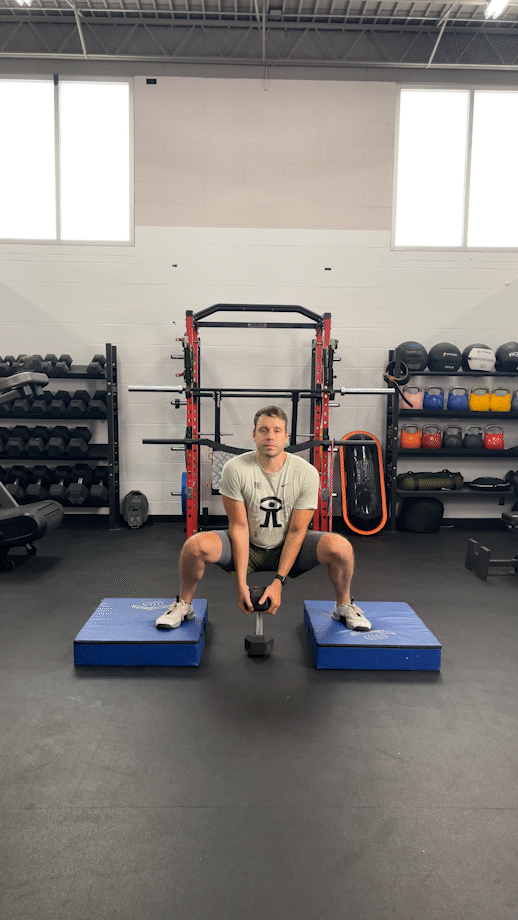
Muscles Targeted: lower back, glutes, adductors, quadriceps, and hamstrings
How to Do It:
- Start upright and get your feet in your preferred squat position.
- With your shoulders down and chest up, lower down into a squat, and count the number of seconds it takes to get there.
- Once you reach your squat depth, quickly squat back up, reset, and repeat.
Trainer Tip: Start with bodyweight before moving on to weighted variations and use a three to five-second eccentric.
Step-Downs
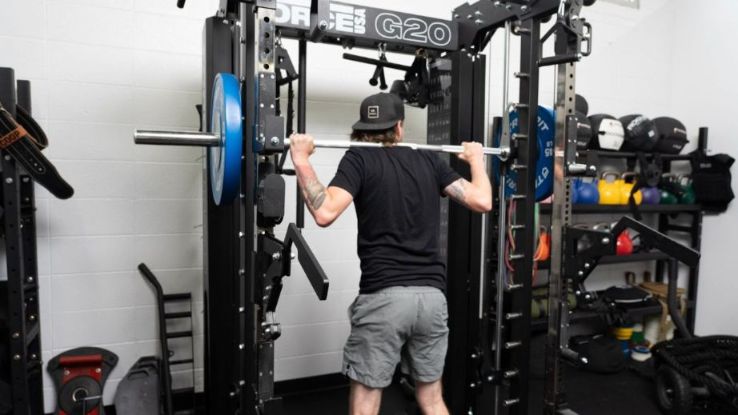
Muscles Targeted: Quads, glutes, adductors, and calves
How to Do It:
- Start with both feet on a weight bench or secure, elevated surface.
- With an upright torso, take one foot off the bench and slowly lower it to the floor.
- Once the foot reaches the floor, step back up quickly and bring your feet together.
- Do all the reps on one foot before switching to the other side.
Trainer Tip: Start with bodyweight and a smaller step to adjust to the movement. When you are ready to progress, add height, a dumbbell, or both.
Pull-Up Negatives
Muscles Targeted: Forearms, biceps, posterior shoulder, upper back, and lats
How to Do It:
- Start with your chin above the chin-up bar with your shoulder blades together.
- Lower down as slowly as you can until your elbows are fully extended.
- Let go and place your feet on the ground.
- Step on a weight bench, get back to the starting position and repeat.
Trainer Tip: Use a bench or elevated surface to start the rep to cut the concentric part out.
Eccentric Training: Q&A
What is the eccentric training method?
Eccentric training is a strength training method that involves slowing down and emphasizing the lowering or negative part of an exercise to help boost size and strength.
What are examples of eccentric exercises?
Some eccentric movements include Nordic hamstring curls, razor curls, negative pull-ups and bicep curls, bench presses, and glute hamstring raises (GHD).
Is eccentric training better?
Eccentric training is another tool a lifter can use to boost results and help prevent muscle strains because muscle strains happen predominantly during eccentric contractions. Plus, when looking to improve muscle hypertrophy, eccentric training is a fantastic method. It may or may not be objectively better, but it’s undoubtedly brutally effective.
References
- Hody, S., Croisier, L., Bury, T., Rogister, B., & Leprince, P. (2018). Eccentric Muscle Contractions: Risks and Benefits. Frontiers in Physiol., 10.
- Yu JG, Malm C, Thornell LE. Eccentric contractions leading to DOMS do not cause loss of desmin nor fibre necrosis in human muscle. Histochem Cell Biol. 2002 Jul;118(1):29-34. DOI: 10.1007/s00418-002-0423-1. Epub 2002 Jun 18. PMID: 12122444.
- Wesam Saleh A Al-Attar et al. Effect of Injury Prevention Programs that Include the Nordic Hamstring Exercise on Hamstring Injury Rates in Soccer Players: A Systematic Review and Meta-Analysis. Sports Med. 2017 May;47(5):907-916. DOI: 10.1007/s40279-016-0638-2.
- Schoenfeld BJ, Ogborn DI, Vigotsky AD, Franchi MV, Krieger JW. Hypertrophic Effects of Concentric vs. Eccentric Muscle Actions: A Systematic Review and Meta-analysis. J Strength Cond Res. 2017 Sep;31(9):2599-2608. doi: 10.1519/JSC.0000000000001983. PMID: 28486337.


